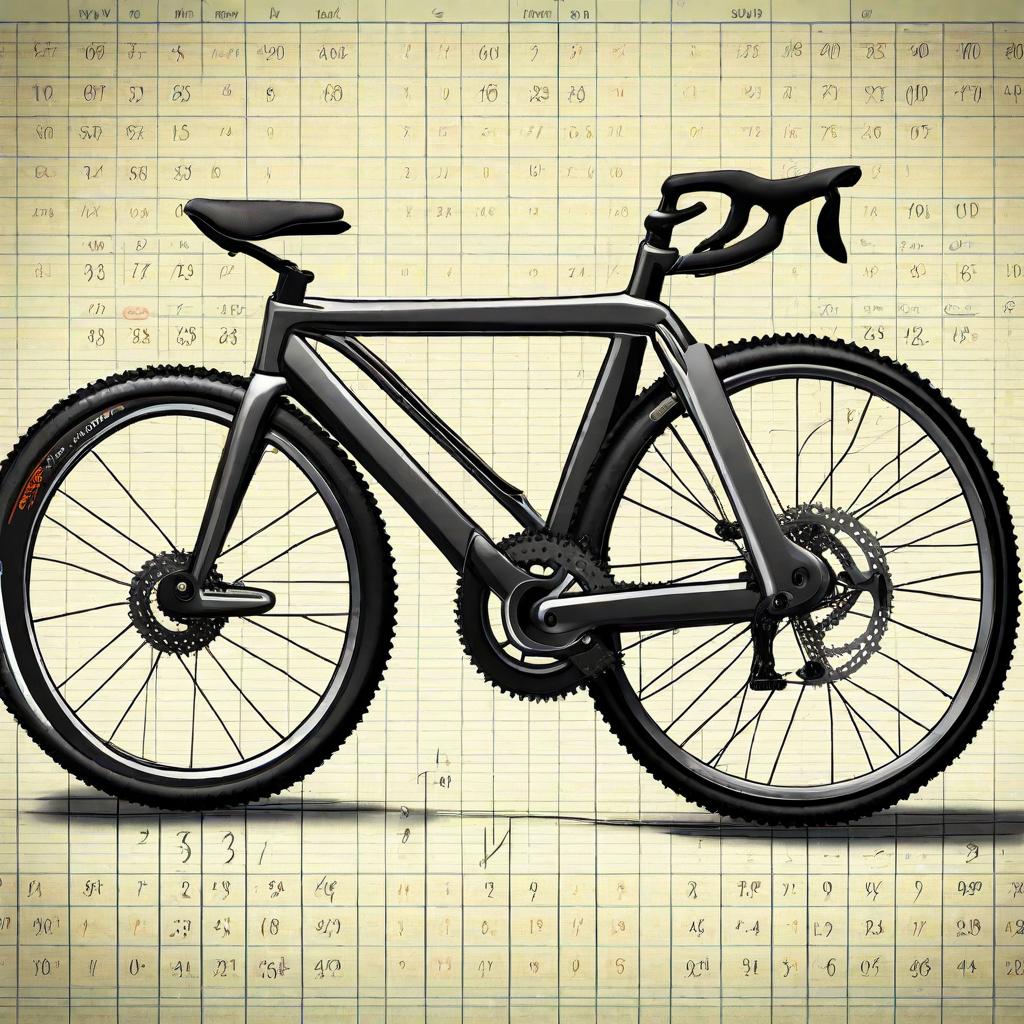Bicycle Gear Inch Calculator: Optimizing Your Cycling Performance

Cycling enthusiasts understand the significance of gear selection in optimizing performance. Whether you’re a seasoned rider or just getting started, choosing the right gear ratio can significantly impact your cycling experience. In this blog post, we delve into the world of bicycle gear inch calculators, shedding light on how they can elevate your riding experience.
Introduction to Bicycle Gear Inch Calculator
Before delving into the intricacies of gear inch calculators, let’s establish a fundamental understanding of gear inches and their relevance in cycling. Gear inch refers to the effective diameter of a wheel when a particular gear is engaged. It provides insight into how far a bike will travel with one complete revolution of the pedals. Understanding gear inches allows cyclists to gauge the mechanical advantage provided by different gear ratios.
Understanding Gear Ratio
Gear ratio, often expressed as a numerical ratio, compares the number of teeth on the front chainring to the number of teeth on the rear cog. This ratio determines how many times the rear wheel rotates for each complete pedal revolution. A higher gear ratio translates to increased speed but requires more effort, whereas a lower gear ratio facilitates easier pedaling but limits top speed.
What is a Bicycle Gear Inch Calculator?
A bicycle gear inch calculator is a tool designed to simplify the process of determining gear inches for various gear combinations. By inputting parameters such as chainring size, cog size, and wheel diameter, cyclists can obtain accurate gear inch values. This information empowers riders to make informed gear selections based on their riding preferences and terrain conditions.
How to Use a Bicycle Gear Inch Calculator
Using a gear inch calculator is straightforward and user-friendly. Begin by entering the values for chainring size, cog size, and wheel diameter into the designated fields. Once the parameters are inputted, the calculator will generate the corresponding gear inch value. Cyclists can then analyze the results to determine the most suitable gear ratio for their needs.
Factors Affecting Gear Inch Calculation
Several factors influence gear inch calculations, including the size of the chainring and cog, as well as the diameter of the wheel. Understanding how these variables interact is essential for accurate gear selection. Additionally, variations in tire size can affect the overall gear ratio, emphasizing the importance of precision when inputting data into the calculator.
Benefits of Using a Gear Inch Calculator
The utilization of a gear inch calculator offers numerous benefits to cyclists of all skill levels. By providing insight into gear inch values, these calculators facilitate informed decision-making regarding gear selection. Whether navigating steep inclines or cruising along flat terrain, cyclists can optimize their riding experience by choosing gear ratios tailored to their specific needs.
Applications of Gear Inch Calculation
Gear inch calculations find applications in various aspects of cycling, from selecting appropriate gears for different terrains to determining optimal cadence levels. By understanding the relationship between gear inches and pedaling efficiency, cyclists can maximize their performance and enjoyment on the road or trail.
Comparison with Other Gear Calculation Methods
While several methods exist for calculating gear ratios, gear inch calculation remains a preferred choice among cyclists and cycling enthusiasts. Its simplicity and accuracy make it a valuable tool for evaluating gear combinations and predicting performance outcomes. By contrast, alternative methods may lack the precision and comprehensiveness offered by gear inch calculations.
Common Mistakes to Avoid
When utilizing gear inch calculators, it’s essential to avoid common pitfalls that could compromise the accuracy of the results. These include misinterpreting gear inch values and overlooking specific bike specifications such as tire size. By exercising caution and attention to detail, cyclists can ensure reliable and consistent gear inch calculations.
Tips for Effective Gear Selection
Achieving optimal gear selection requires experimentation and a willingness to adjust settings based on changing conditions. Cyclists are encouraged to match gear ratios to the terrain they’ll be traversing, prioritizing comfort and efficiency. Additionally, exploring different gear combinations and monitoring their impact on performance can lead to valuable insights and improvements in riding technique.
Understanding Gear Inches and Speed
The relationship between gear inches and speed is a crucial consideration for cyclists aiming to maximize their velocity. By selecting gear ratios conducive to higher cadences, riders can achieve greater speeds with less effort. However, striking the right balance between gear ratio and cadence is essential to avoid overexertion and maintain sustainable performance levels.
Real-life Examples of Gear Inch Calculations
To illustrate the practical applications of gear inch calculations, let’s examine a few real-life scenarios. Whether tackling a steep climb or navigating technical descents, cyclists can leverage gear inch values to optimize their gear selection strategy. By sharing insights and lessons learned from these examples, riders can enhance their understanding of gear inch calculations and their impact on cycling performance.
Gear Inch Calculator Tools and Resources
In addition to standalone gear inch calculators, cyclists can access a plethora of online resources and smartphone applications dedicated to gear selection and optimization. These tools offer convenience and versatility, allowing riders to perform gear inch calculations on the go and explore various gear combinations from the palm of their hand.
Conclusion
In conclusion, the bicycle gear inch calculator serves as a valuable asset for cyclists seeking to optimize their riding performance. By understanding gear inches and their implications for gear selection, riders can make informed decisions that enhance comfort, efficiency, and overall enjoyment on the road or trail. Whether navigating challenging terrain or pursuing personal fitness goals, the utilization of gear inch calculators empowers cyclists to achieve their full potential and unlock new possibilities in their cycling journey.
FAQs
Shimano Bicycle Gear Inch Calculator:
Shimano, a prominent manufacturer of bicycle components, offers gear inch calculators as part of their online resources. These calculators help cyclists determine the gear ratios and inches for various setups, aiding in gear selection and optimization for different riding conditions.
Bicycle Gear Inch Calculator in Inches:
A bicycle gear inch calculator in inches is a tool that helps cyclists determine the effective diameter of the wheel resulting from the gear ratio and wheel size. This calculation aids in understanding how far a bike will travel with one complete rotation of the pedals in a particular gear.
Bicycle Gear Inch Calculator MTB (Mountain Bike):
A bicycle gear inch calculator for mountain bikes specifically caters to the gearing needs of off-road riding. It considers the terrain’s demands, rider preferences, and the characteristics of mountain bike drivetrains to suggest optimal gear ratios and inches for climbing, descending, and traversing varied landscapes.
Single Speed Gear Inch Calculator:
For single-speed bicycles, where there’s only one gear ratio available, a gear inch calculator determines the effective gear size. It’s crucial for single-speed riders to select a gear ratio that balances speed and torque according to their riding style and terrain.
Gear Inch Calculator for Bikepacking:
Bikepacking, which involves long-distance cycling while carrying gear for camping or travel, requires careful gear selection to handle varying terrain and loads. A gear inch calculator tailored for bikepacking considers factors like gear range, weight distribution, and endurance to suggest suitable gearing options.
Bicycle Gear Ratio Calculator:
A bicycle gear ratio calculator determines the relationship between the number of teeth on the front and rear gears, providing insight into how much each pedal stroke translates into wheel rotation. It’s a fundamental tool for cyclists to fine-tune their gearing for efficiency, speed, or climbing ability.
Gear Inches Explained:
Gear inches represent the effective diameter of a bicycle wheel when a particular gear ratio is engaged. It’s calculated by multiplying the gear ratio (front chainring teeth divided by rear cog teeth) by the wheel diameter in inches. Gear inches offer a standardized way to compare gearing across different bicycles and setups.
Gear Inches for Touring:
When it comes to touring, selecting the right gear inches is crucial for maintaining a comfortable cadence while carrying extra weight over long distances. Lower gear inches are preferred for climbing steep hills with loaded bikes, while higher gear inches offer efficiency on flat or downhill sections.
Related Posts:
Bicycle Gear Inch Calculator: Optimizing Your Cycling Performance
About Us


I absolutely love motorcycles, bikes, and dirt bikes. There’s something exhilarating about the roar of the engine and the sense of freedom that comes with cruising the open road. Whether it’s the sleek design of a sport bike, the ruggedness of a dirt bike tearing through the trails, or the classic allure of a vintage motorcycle, every ride offers a unique experience. The adrenaline rush I get from leaning into curves or tackling off-road terrain is unparalleled. Riding is not just a hobby for me. It is a passion that strengthens my soul and brings me immense joy





